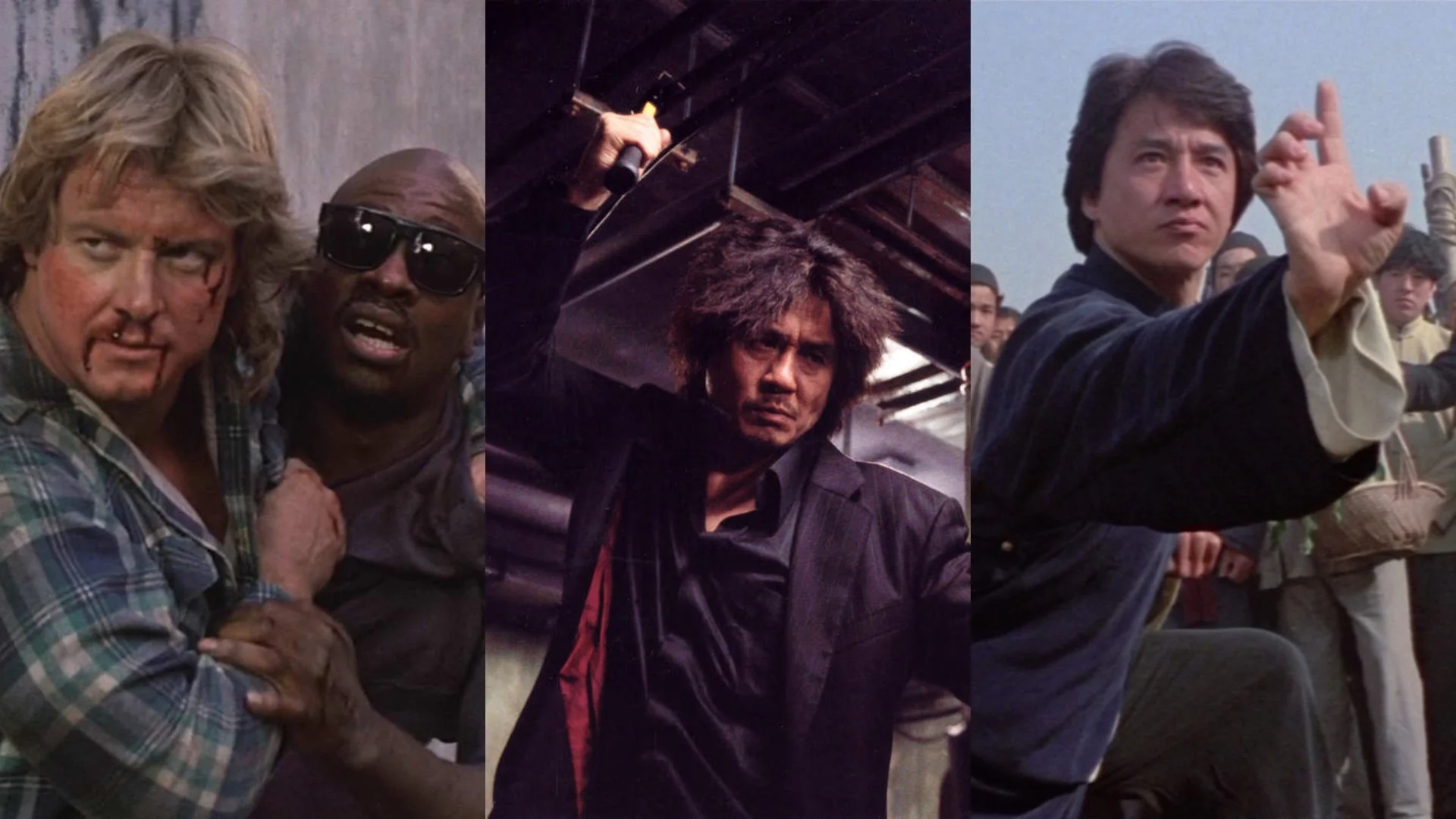I'll Be There For You Tonight: Walter Hill's Streets of Fire
Streets of Fire, Walter Hill’s 1984 cult classic, begins with a notice that we’re in “another time, another place.” Like the Los Angeles of Ridley Scott’s Blade Runner, this is a world of flickering neon and rain-soaked alleys, but it’s also a world where women sing like Pat Benatar and men still drive cherry-red Studebakers. A living anachronism featuring doo-wop singers, hammer fights, and Rick Moranis, Streets of Fire is a movie that can earnestly call itself “a rock & roll fable” and get away with it.
Before the opening credits are over, we’re witnesses to an audacious kidnapping--singer Ellen Aim (Diane Lane) is plucked right off an arena stage by obsessed fan Raven (Willem Dafoe), who happens to have a gang of leather-clad, chopper-riding toughs behind him. The only one who can rescue Ellen from the wrong side of the tracks is Tom Cody (Michael Pare), a broodingly handsome soldier who left town—and Ellen—years ago. Accompanied by Ellen’s jealous manager/boyfriend (Rick Moranis) and a shaggy-haired sidekick with a killer left hook (Amy Madigan), Tom blasts his way through Raven’s gang to find Ellen, his trenchcoat perpetually billowing behind him, looking effortlessly cool.
Among all of Walter Hill’s films, Streets of Fire is the most achingly romantic, in part because it’s also the closest thing to a musical Hill ever directed. Though characters only burst into song onstage, the movie throbs with the yearning of an epic 80s power ballad; scenes of passionate embraces in the rain and soulful parting glances across a crowded concert hall make Streets of Fire look like an elaborate music video for itself. (On the Blu-ray features, Hill reveals that The Umbrellas of Cherbourg was an influence, making Streets of Fire and La La Land unlikely cousins.) Bookending the film are songs by Jim Steinman and Fire Inc. that sum up the film’s obsession with beautiful people in fast cars with glorious, over the top excess. In a just world, these would be Karaoke standards.
Hill plays with undeniably broad strokes, rendering most of his characters archetypes. Diane Lane is luminescent as Ellen Aim, the New Wave Helen of Troy lip syncing her siren songs. Michael Pare was never much of an actor, as his mumbling line reads attest, but he is a magnetic screen presence. As a man from “another time, another place,” he has the face of a doomed ‘50s heartthrob in a Shangri-Las song—which, come to think of it, was exactly who he played in Eddie and the Cruisers. And the excellence of Willem Dafoe as a sinister greaser named Raven needs no further explanation. But it’s Amy Madigan’s McCoy who steals the film. Initially conceived as a hard-drinking, mustachioed Edward James Olmos-type, Madigan convinced Hill that Tom’s drifter sidekick would be more interesting played by a woman, and it’s one of the best decisions in the film. Glowering under her dirty baseball cap, McCoy stands out as the film’s most vibrant and original character, taking her place next to Aliens’ Vasquez as the Badass Movie Butch of my dreams.
Part of the joy in rewatching Streets of Fire—and discovering it for the first time, surely—is basking the perfect alchemy of its supporting cast. Rick Moranis shines as the smarmy, bowtied, fantastically-named manager, Billy Fish. Despite his prickly early scenes needling Tom and McCoy, by the end of the film he reveals hidden depths, because it’s ultimately impossible to hate any character played by Rick Moranis. The late Bill Paxton has a small role as a Morrissey-quiffed bartender, and Ed Begley Jr. shows up as the thing behind the diner in Mulholland Drive. Fear frontman and beloved Clue corpse Lee Ving is also on-screen as Raven’s second-in-command, giving the rock & roll fable a dash of punk credibility.
Hill’s visuals give the film a sultry sheen, contrasting gritty urban decay with a chrome 1950s aesthetic that’s idealized but not whitewashed. The script by Hill and Larry Gross is not without a social conscience; there are mentions of a vague military that swallowed up youths like Tom and McCoy and spat them out into an uncertain future, and the racist cops who harass the all-black acapella group The Sorels get a fiery comeuppance. All this, plus the hero and villain beating the shit out of each other with coal hammers underneath the train tracks? Streets of Fire frequently feels ahead of its time, a proto-mashup of western, biker flick, and rock opera with a unique visual point of view. Think a comic book movie without the comic book.
Shout! Factory has saved Streets of Fire from bare bones, discount bin hell with its Blu-ray release of the film under its Shout Select banner. Included on the disc are new extras such as a feature-length documentary about the making of the film, and “Rumble on the Lot,” a doc combining new interviews with Hill, Pare, and Madigan with archival on-set footage to delve into the offbeat cult classic. Like any truly great Blu-ray special feature, these tell you more about the movie than you maybe ever wanted to know—Pare confessing that he wished he could have seduced his co-star Diane Lane while in the midst of a failing marriage reveals more about him than he probably realized, to give just one example.
Streets of Fire plays like a crooning pop song punctuated with shotgun blasts. Lovingly presented by Shout! Factory, this underseen gem has never looked or sounded better. Walter Hill’s singular vision of “another time, another place” is a dark little thrill, like hearing the rumble of a pack of motorcycles in the distance. Now, where can I get Ellen Aim Comeback Tour tickets?







